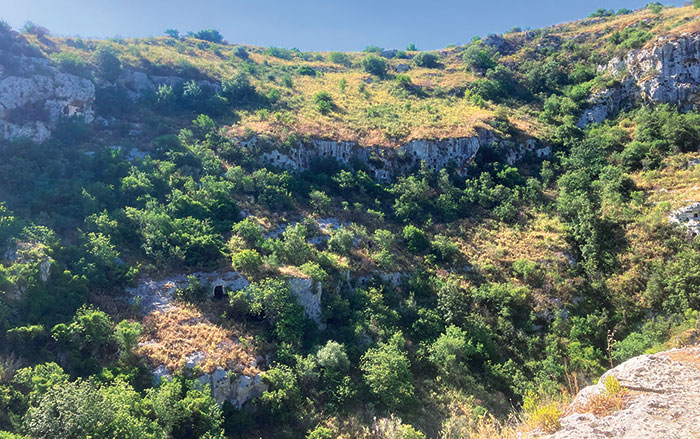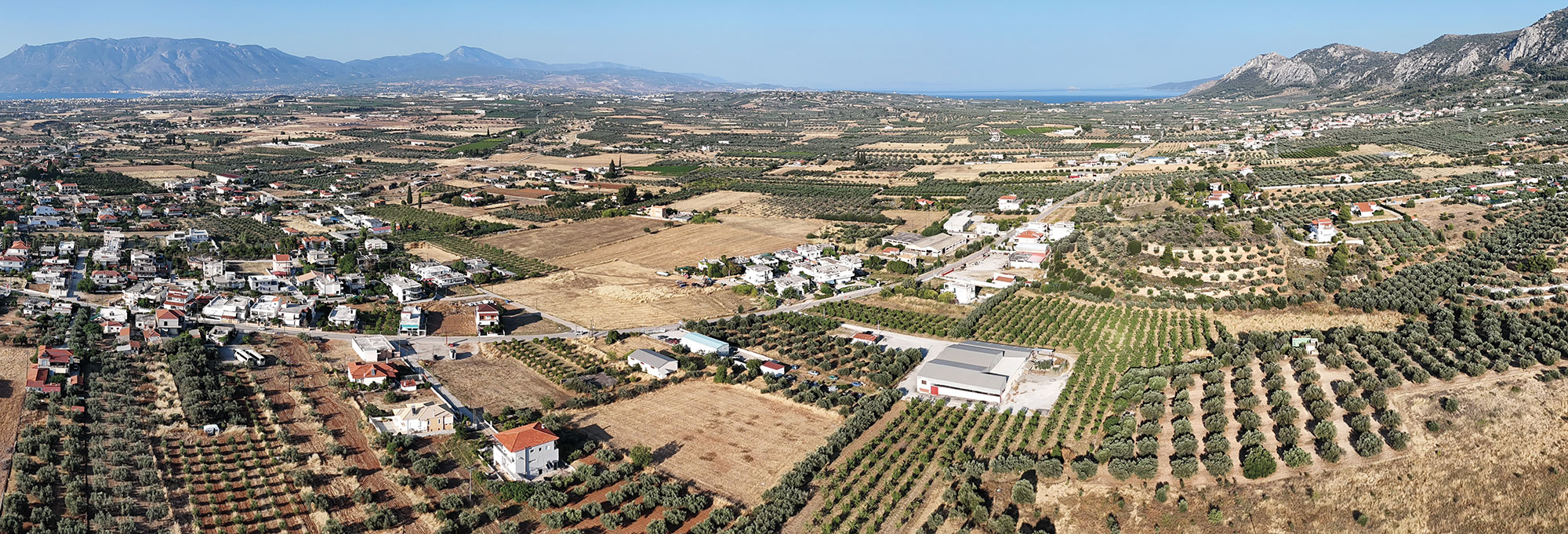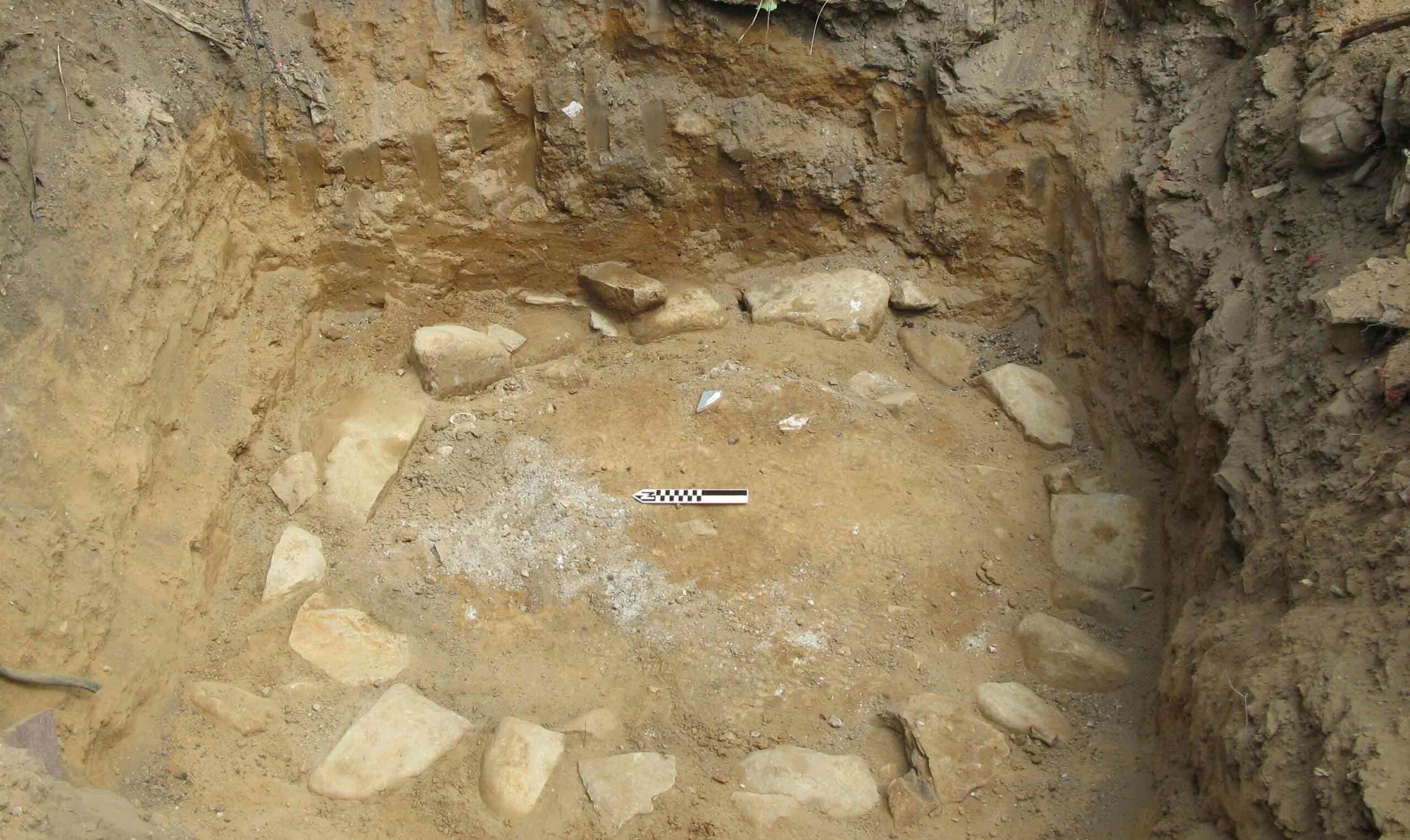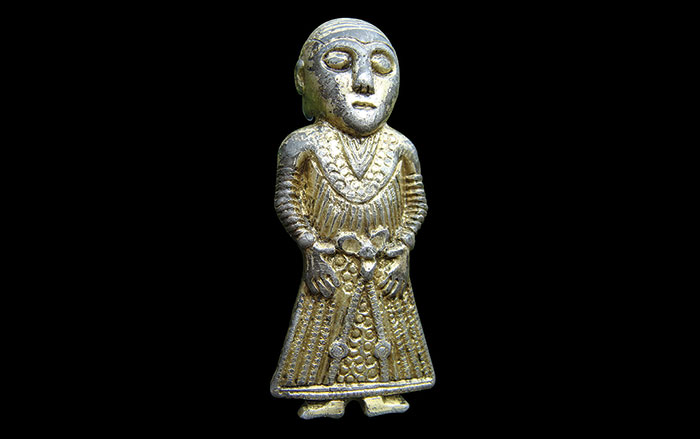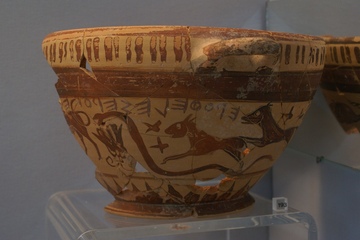
COLUMBIA, MISSOURI—John Barnes of the University of Missouri suggests that rather than depicting a simple animal scene, a 2,600-year-old skyphos at the Lamia Archaeological Museum in central Greece could portray an early Greek understanding of constellations. Approximately one-third of the wine cup, which was discovered in a trench next to a temple in the acropolis of Halai, is missing, but images of the back half of a bull, a snake, a hare or small dog, a large dog, a scorpion, a dolphin, and the front half of a panther or a lion have been preserved. Barnes spotted the skyphos while visiting the museum. “My dad raised me on astronomy, and to me, the snake, rabbit, and dog together looked like constellations. That group jumped out at me,” he told Live Science. He adds that the decorative images may have been arranged into seasonal groups. To read about a Greek colony established in Italy around this time, see ARCHAEOLOGY's "Rediscovering Paestum."


